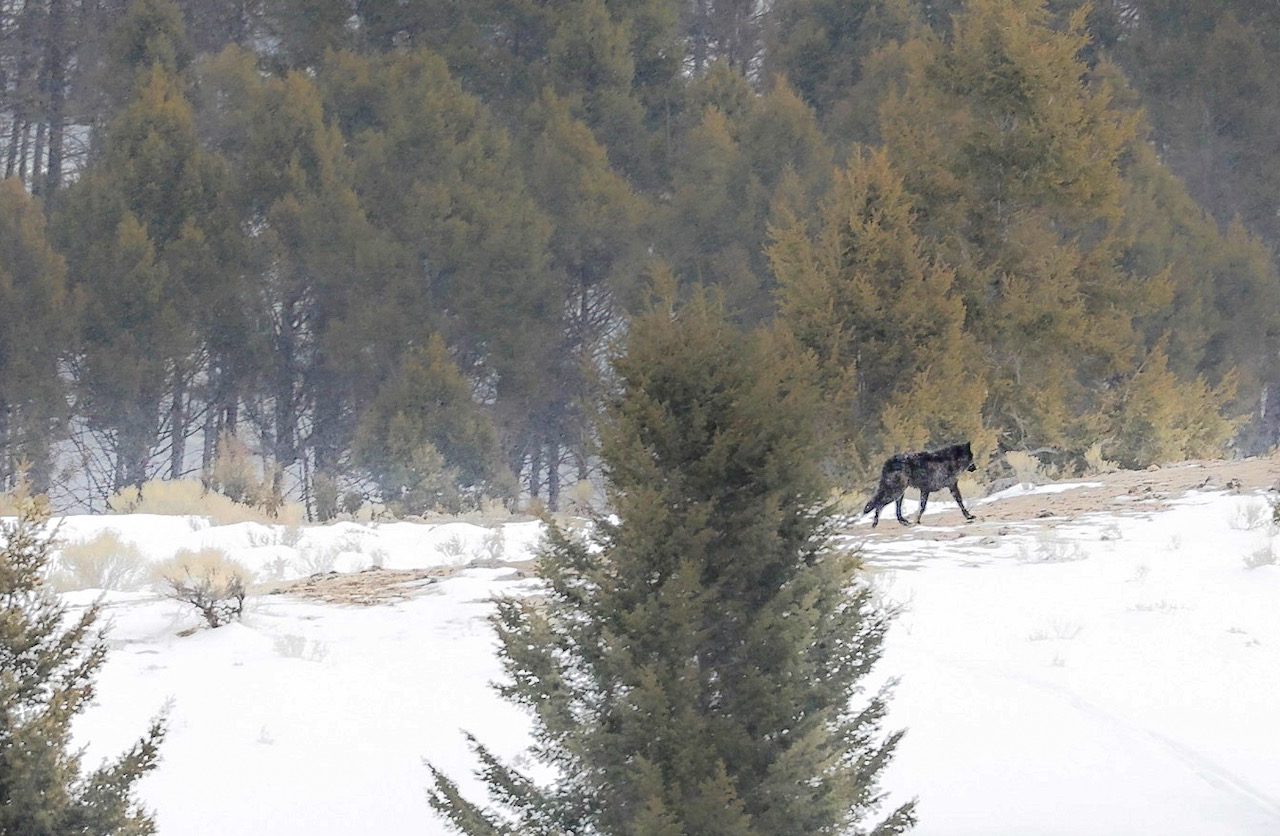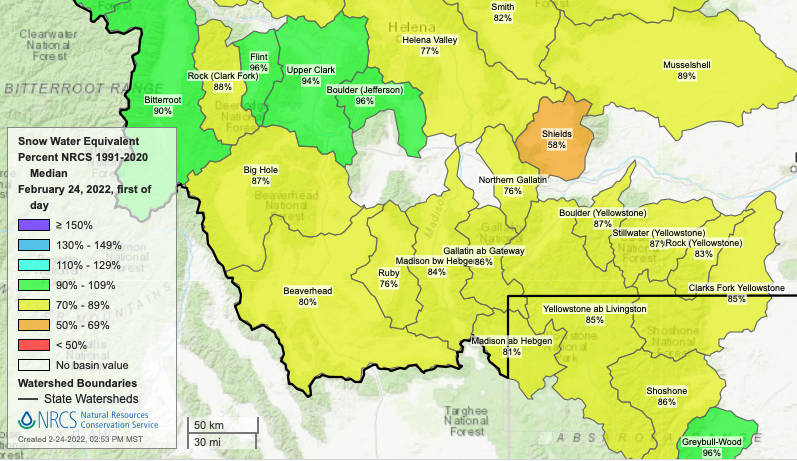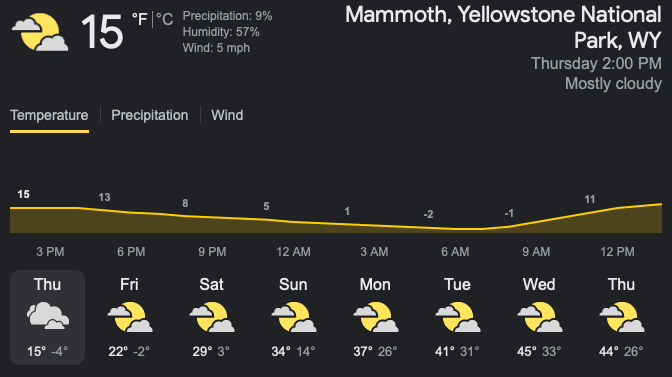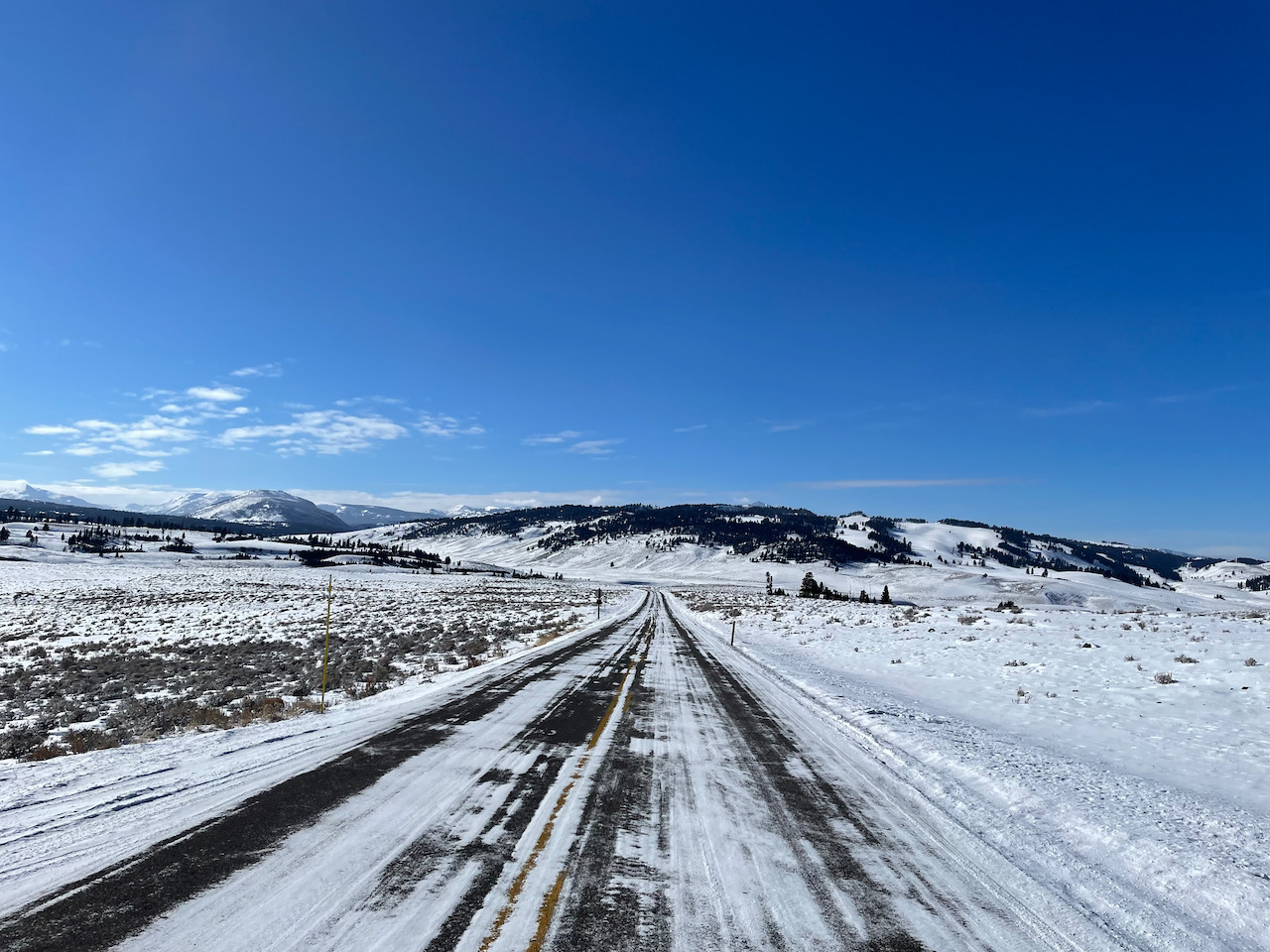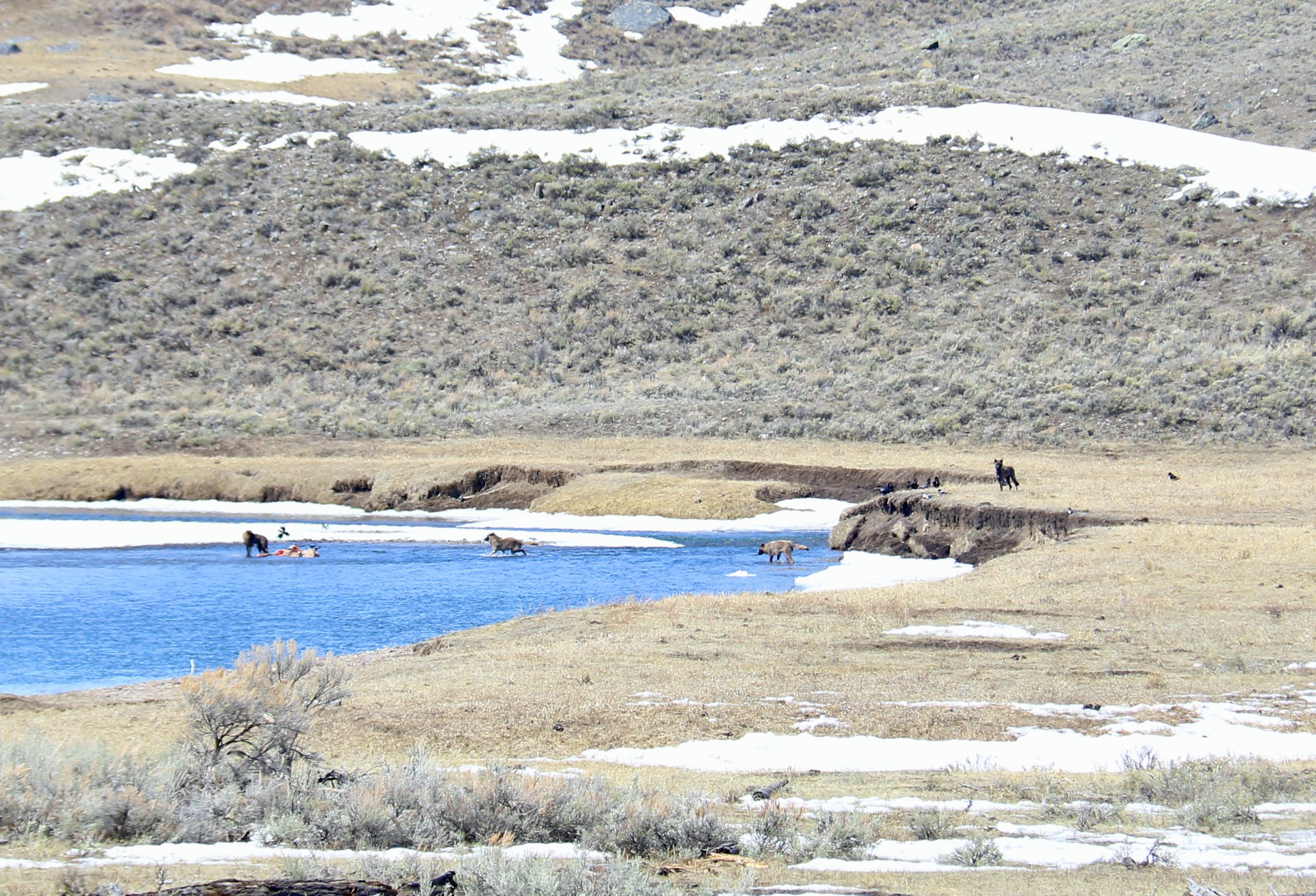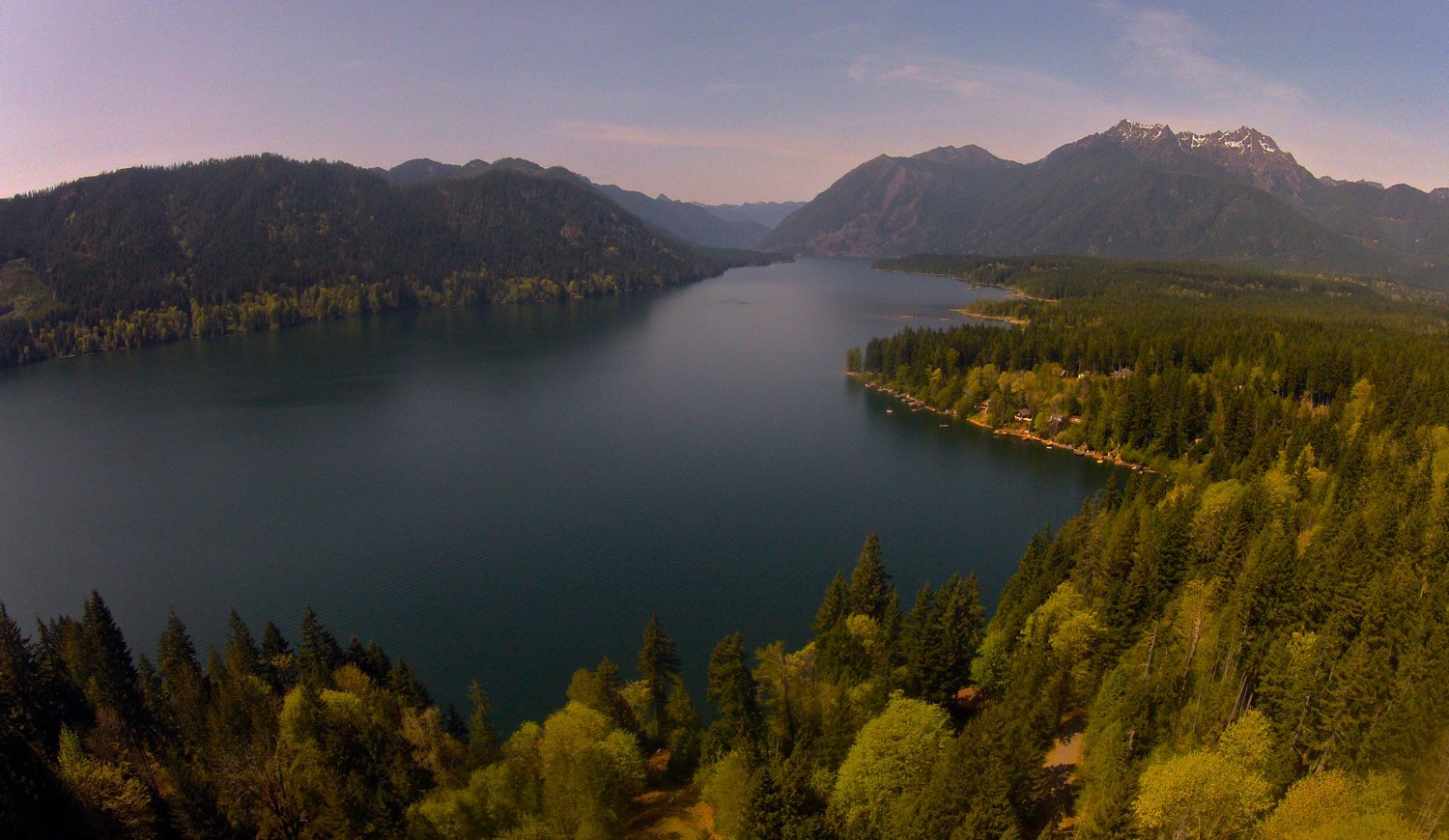This week in Yellowstone, the sub-zero temperatures are leaving, the wolf hunt is winding down, and Yellowstone National Park turn 150 years old!!! If you are visiting the park this week, be prepared for otters, moose, and maybe even a grizzly bear! The weather will be good, the snowpack is less than ideal, but it is never a bad time to visit Yellowstone. Hope you make it to the park this week!
If you enjoy this or know someone who will, please share this and get ready to visit America’s first National Park. If you want to support my weekly park posts, please pick up a guidebook!
BIGGEST NEWS OF THE WEEK
Yellowstone National Park Turns 150 Years Old
On March 1st, 1872, President Ulysses S. Grant signed the Yellowstone National Park Protection Act, setting aside one of the world’s largest nearly intact natural ecosystems for the “benefit and enjoyment of present and future generations,” according to the park.
Before the park was created, the region was equally important. Over 10,000 years before the United States government preserved Yellowstone National Park, indigenous peoples had frequented the area, fishing, hunting, gathering plants, gathering obsidian and using thermal waters for religious and medicinal purposes.
To celebrate the region, the indigenous peoples, and the anniversary of the National Park, the NPS and nearby communities have numerous events planned for 2022. While there will be no in-person events on Match 1st, due to Covid and it being the shoulder season, there are numerous online talks and events taking place on and around March 1st. A full list of these events, including events throughout the rest of the year, can be found on the 150 Years of Yellowstone website, reached by clicking here.
Yellowstone National Park has stated “During March-August this year, the park and partners will provide opportunities to reflect on 150 years of protecting Yellowstone National Park, highlight successes in the ecosystem, and open dialogue on the lessons learned from yesterday, the challenges of today, and a vision for tomorrow. We will focus on the stewards of Yellowstone, conservation and historic preservation, visitor experience, infrastructure, Tribal Nations, and partner engagement via social media, a bimonthly virtual video series featuring various subject matter experts, and a range of both virtual and in-person activities. Of particular importance to Yellowstone during the commemoration is to be reflective, intentional, inclusive, and impactful.”
I am looking forward to many events and will do my best to highlight them for you all before and after they happen. Again, if you want to know what official events are currently planned, please go to this website: https://www.nps.gov/yell/getinvolved/150-years-of-yellowstone.htm
While I hope you all can visit the park for these anniversary events this year, I know not everyone can make their way to Yellowstone. That is why, in a few weeks time, I will be announcing a great way for you and those you know to experience the wonders of Yellowstone from your home. In the meantime, if there is an image or location that you desire seeing from Yellowstone, please let em know and I will work to get it to you, free of charge.
OTHER NEWS
Montana’s Region 3 Wolf Hunt Ends Above Quota, but Statewide, Wolf Harvest Numbers Are Still Low
The quota of 82 wolves was met in region 3 in Southwest Montana on February 17th, but it took a few days to get the final tally of wolves killed in this area. As reported by the Billings Gazette on February 23rd, 2022, the region 3 wolf season ends with 85 wolves killed, 3 over quota.
In an interview with the Billings Gazette, FWP spokesman Greg Lemon said, “It’s not too surprising that there were harvests reported after the quota was met, two were harvested the morning we announced the closure. The other one was in a trap.”
The last three wolves that were killed above the quota included a male trapped in Butte-Silver Bow County, as well as a female snared and a male wolf shot in northern Park County’s Wolf Management Unit 390.
In total, 25 wolves of the 85 wolves killed in this region were known to Yellowstone National Park managers. The 25 that have been killed this winter in were Montana, Idaho and Wyoming. Nineteen of them were killed in Montana.
In total, 237 wolf kills have been reported so far to Montana FWP this hunting and trapping season. The article continued by saying “the park’s current wolf population is estimated at 89 animals. Yellowstone’s average wolf population between 2010 and 2019 was 94.5 wolves. As of 2015 it was estimated that 528 wolves lived in the Greater Yellowstone Ecosystem, which stretches beyond the park’s boundaries.”
The article also shares wolf numbers per Montana Hunting Region: Region 3 has seen the most wolves killed, followed by 82 in northwest Montana’s Region 1 and 58 in western Montana’s Region 2. No wolves have been killed in Eastern Montana and only one has been shot in Region 5 in Sweet Grass County, while 11 have been killed in Region 4.
While the news is sad for wildlife lovers around the world, it is important to note that the overall total wolf hunt is on par with the hunting numbers over the last decade. The 237 wolves reported to be killed so far is still way lower than the statewide quota of 450 animals. Montana’s wolf season ends after March 15.
SNOWPACK UPDATE
The snowpack is making the news! But not in a. Good way. On the 23rd of February, 2022, NBC Montana ran an article titled “Montana snowpack lower than previous years.” The article talks about fishing and the fear of an upcoming drought, but does little to actually share just what the snowpack looks like.
This week, the snowpack will continue to drop, ever so slightly. Last week’s cold and snow helped, but the snow was light, with very little moisture, inflating then deflating the numbers. Around Yellowstone, the snowpack reached 89% of normal earlier in the week, only to drop back down to 82% by Thursday morning. Cold weather will remain in the mountains and some snow will fall, but not enough to make a difference. Sorry to be a bummer. Maybe we will see a wet and snowy March…
WEATHER FOR THE COMING WEEK
This weekend will see the frigid, below zero temperatures that rocked the region start to disappear, and highs will reach the 30s or even 40s during the day. Snow will arrive near Cooke City toward mid-week, but the rest of the park isn’t expected to get much, if any snow this coming week.
This is the weather.com forecast for the three closest areas that are currently drivable in the park- Gardiner, Mammoth Hot Springs and Cooke City. While they don’t specifically cover the entire region, these forecasts give a great idea of what to expect all around the region. As always, weather can and does change fast in the park, so always be prepared for anything.
ROADS AND CAMPGROUNDS
I’d expect the roads to be decent this week. There may be some snow and ice on the road every so often, as well as areas of drifting snow over the road, but generally, there isn’t currently anything major that will impact travel. Do be aware that bison jams are once again picking up around the park and to drive slow and safe, as wildlife can pop out rom around corners at anytime.
For up-to-date information call (307) 344-2117 for recorded information, or sign up to receive Yellowstone road alerts on your mobile phone by texting “82190” to 888-777 (an automatic text reply will confirm receipt and provide instructions). Anticipate possible road closures due to inclement weather and dangerous driving conditions.
Planning on camping in the park this week?
Mammoth is still open and not very frequented at all. What a shock. Looks like not very many people are enthused about winter camping. I do expect this to start to change soon, though. In a few weeks, the migratory birds will start to return, as well campers. It won’t happen this week, though.
WILDLIFE WATCH
Last week was all about the otters. They have been sighted nearly daily on the Lamar River and Soda Butte Creek. Sometimes they are quite far from the road, other times they will be a dozen or two feet away, scurrying on the snow or diving into the frigid water to feast on fish. Near the confluence, there have also been numerous bighorn sheep sightings. Bighorn sheep have also been lingering on the cliffs between Mammoth and Gardiner quite often, so make sure to stop at the pullouts and take a look up. I saw a dozen up there on Monday, but no other cars stopped or even looked up.
Wolf sightings are sporadic at the moment, but that could change in a moment’s notice, as their behavior is much less predictable. Coyotes can be spotted paired off, or even in groups, as their mating season winds down, but don’t be shocked if you see some strolling solo. Bison and elk are prevalent between Gardiner and the Roosevelt Junction. Moose are still hanging out near Pebble Creek, and typically are best seen in the morning.
The biggest potential wildlife sighting could be grizzly bears, as the usual first grizzly sighting of the year takes place around this time of the year. Each week that passes, the likelihood of seeing a grizzly will increase. Last year, a grizzly was spotted during the second week of March at the Blacktail Ponds a few miles east of Mammoth. Chances are, a grizzly will be spotted there soon. Also, keep an eye out for the black bear with cubs near the Petrified Tree pullout. In warm weather, the sow and cubs have been walking around and leaving the den.
HIGHLIGHT OF THE WEEK
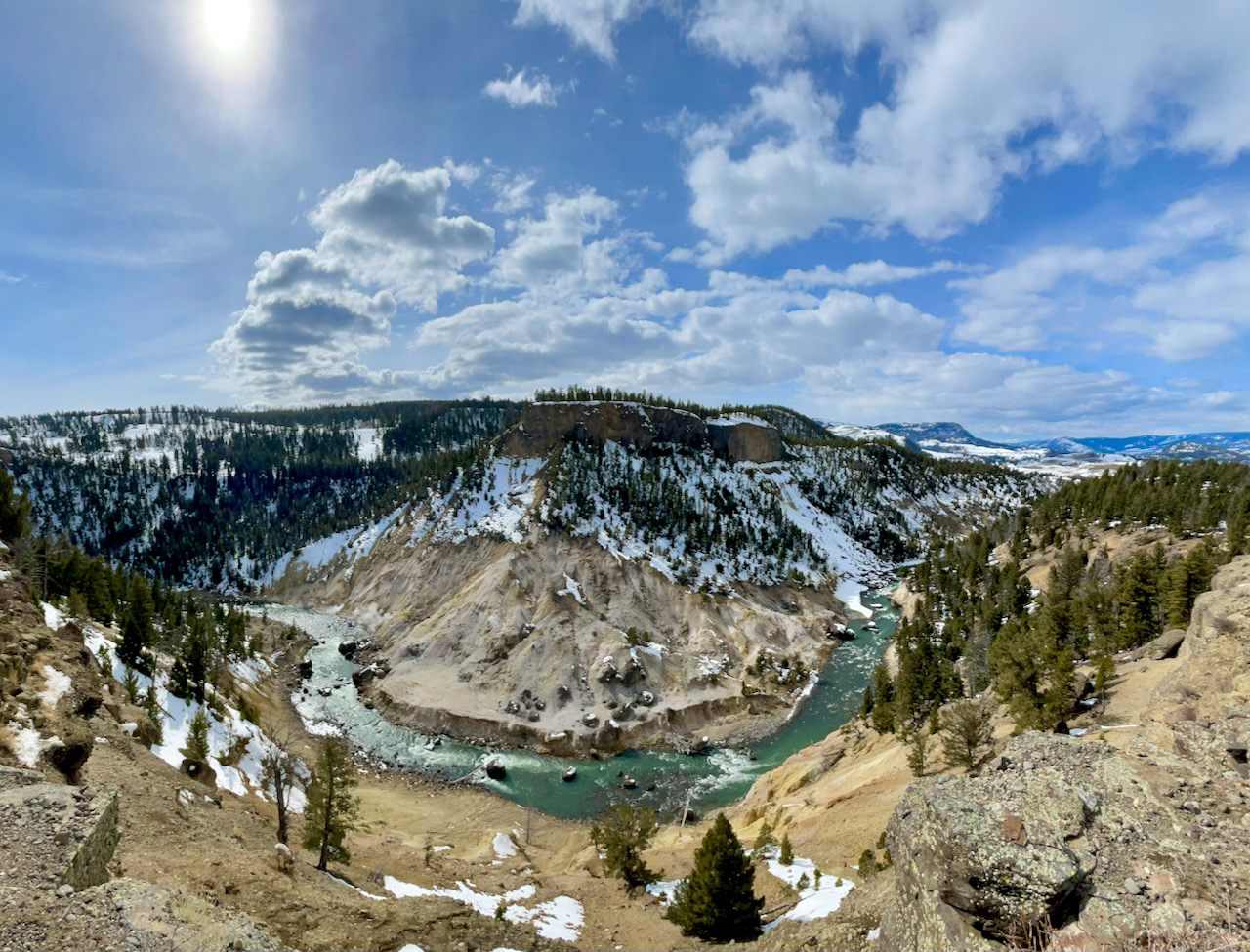
Stroll the Canyon Rim
While the Grand Canyon of the Yellowstone gets most of the glory, the walk on the rim from the Yellowstone River Picnic Area to a viewpoint of Calcite Springs from the opposite of the canyon as the road is a memorable experience and one where you’ll most likely have some solitude. Reached by parking at the Yellowstone River Picnic Area, just past the bridge crossing near Roosevelt on the way to Lamar, and walking up the visible boot path near the bathroom, you’ll reach the canyon rim in less than a quarter mile. The path should be pretty well-trodden and easy to find, even if it is an unofficial trail. A handful of people will travel it each day and with the lack of snow, you shouldn’t need snowshoes.
Once you have walked up the hill, the view from here is fantastic, but not the best you can get. If you have the time and energy, I recommend walking upriver as far as you would like. About a mile and a half or so from first overlook, you’ll start to get impressive views of the geology of the region, as well as a great view of the steam rising from Calcite Springs, below Bumpus Butte. Across the river canyon, you may catch sight of the Calcite Springs Overlook. When here, keep an eye out for bison, elk, eagles and even bighorn sheep. This is also a good spot to unfurl a blanket or find a rock to sit on and enjoy the splendor of sitting above the majestic Yellowstone River. I know I have recommended this area before, but it is that good and not enough people know about it.
TIP OF THE WEEK

How to Spot Wildlife in Yellowstone
Excerpt via my Wildlife Watching Guide to Yellowstone National Park, on sale now.
There are three main approaches for spotting wildlife in Yellowstone, but your best bet is a combination of all of them.
The first method, which is “randomly” finding animals on or near the road, is the easiest and least stressful. This is what most of the visitors do when exploring Yellowstone. Most often, this is how you will see animals like bison, elk, antelope and the occasional bighorn sheep. Even after 30+ years of coming to the park, I still have my best luck doing this. If you are lucky or have good timing, you’ll even get to see a bear or maybe a pack of wolves, but these are much rarer for those park visitors who aren’t actively searching or frequently stopping.
Next up, we have the “scan-and-drive” method. This one takes some practice, as not everyone is used to driving, or being in a car going 30+ miles an hour and looking intently for wildlife. If you are alone and driving, this method isn’t recommended, though it is doable. You should always keep your eyes on the road at all times, but an occasional glimpse out each side is perfectly allowed.
Driving and scanning is best done with at least one other person in the car. The more eyes looking for wildlife, the better odds you have of seeing something. Now, seeing and recognizing an animal from a moving car is quite hard, so before you come to the park, take some time to practice. The drive to Yellowstone can be a great time to practice this. Look for birds and animals along the way next to the Interstate. No matter what the season, I guarantee that you’ll see something. When I lived away from the park, I would drive or be a passenger in the car from Seattle to Yellowstone. Along Interstate 90, I have seen deer, elk, eagles, hawks, antelope, coyotes, fox and even a rare moose! The more active your eyes, the better chance you’ll have at seeing these too.
Finally, we have the “sit-and-scan” method of looking for wildlife in Yellowstone. This is the more laidback approach to seeing animals in the park, as it will have you in one spot for a longer period of time than driving through. Sitting and scanning can be done in a couple of ways. Most who use this method will find a pullout and park for a while, scanning the open fields and nearby hills for animals. Others will park for hours on end at the same place, setting up a day camp and scanning until dark. While the latter has its place in wildlife watching, the vast majority of visitors to the park will do the first method. I recommend doing the short stop and scan for your first few trips to the park, as your animal sightings increase with the more ground that you can cover.
To best stop and scan, you’ll need a pair of binoculars or a spotting scope. Be aware that most animals you will see this way will be far away and very hard to see with your naked eye. If the animal is closer, you’ll more than likely encounter traffic and see people taking pictures in and out of their cars.
No matter how you choose to search for wildlife in the park, remember that there is no wrong way to do it. We all have our preferred methods and if you are having a good day in the park, that is all that matters. That being said, to have the best chance of seeing animals in Yellowstone, driving the roads all day and scanning from the car will typically yield you with the most sightings.
WANT TO KNOW MORE?
Curious about something not mentioned in the post?
Send me an email or message on social media and let me know how I can help.


